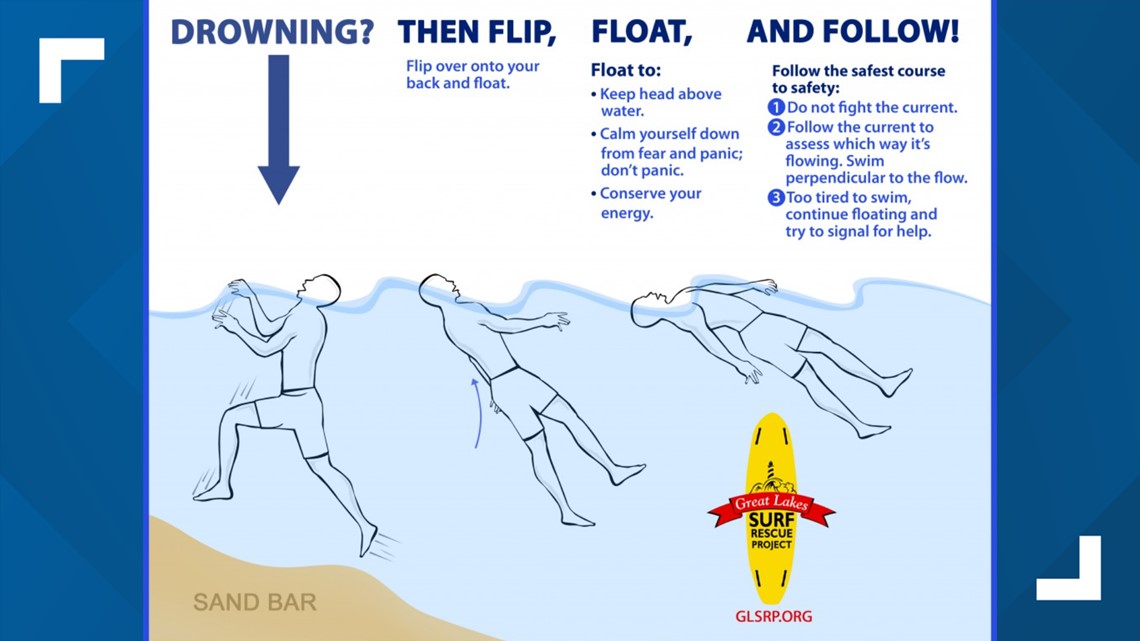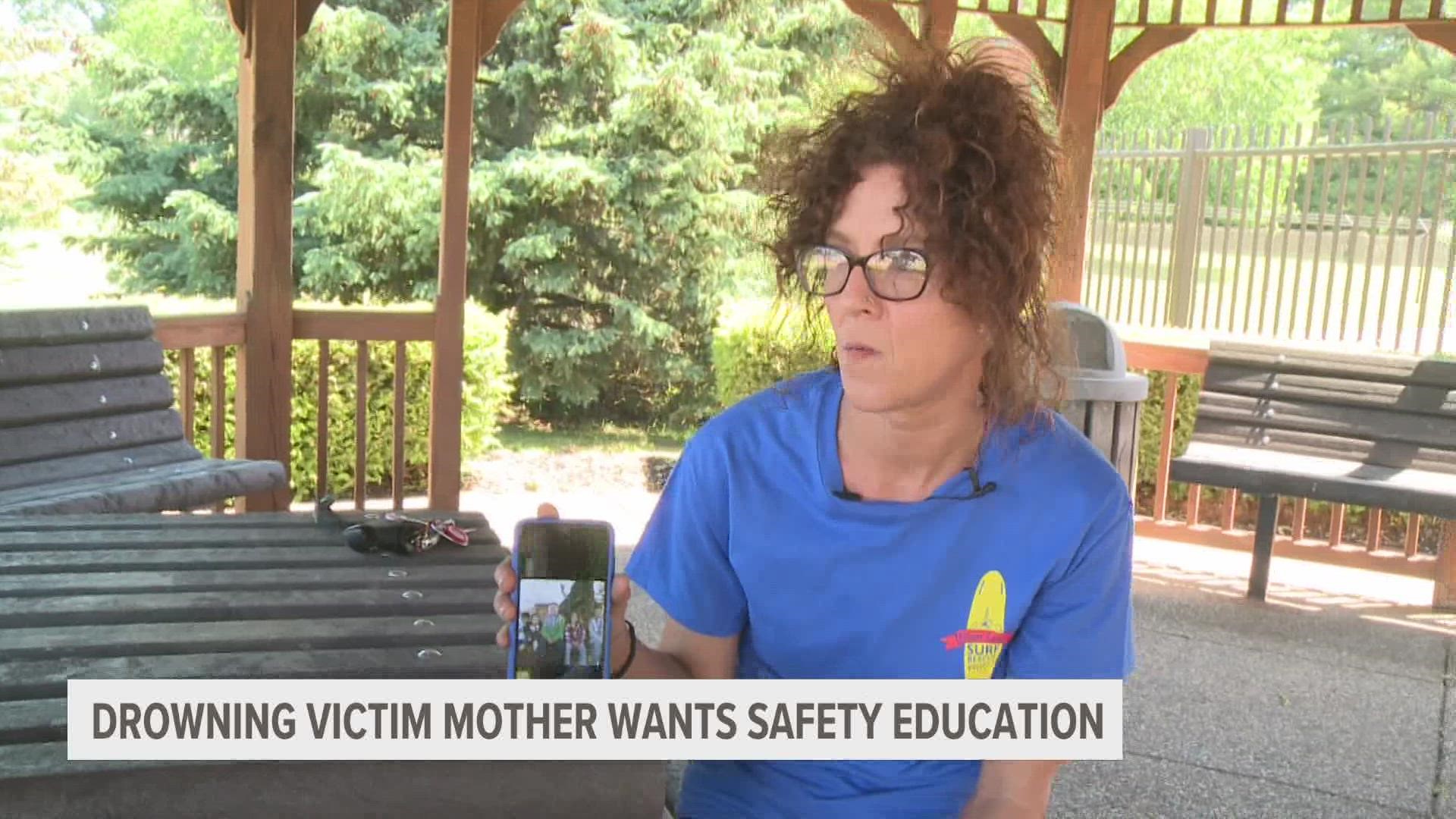PORT SHELDON, Mich. — Lake Michigan is the deadliest body of water in the Great Lakes, having taken 18 lives already in 2022, According to the Great Lakes Surf Rescue Project. Nearly four years ago, another life lost to drowning in Lake Michigan was Brandon Schmidt, whose mother has dedicated herself to water safety education.
"We visited so many bodies of water, he was a great swimmer," said Brandi Donley, who lost her oldest son at age 20. "I’d definitely like people to know the capabilities you think you have, Lake Michigan has so much more."
Her son was swimming at Windsnest Park in Port Sheldon on Aug. 15, 2018 before going under and not coming back up. The park had no signs depicting the dangers of the currents, nor was there a floatation device anywhere to be found. In the wake of her son's death, Donley went in front of the township board demanding those omissions be fixed.
She's still fighting for change. Donley believes if a lifeguard had been on duty, her son would still be alive. Even if she isn't able to enact largescale changes like lifeguards at every beach, she's hopeful Michigan will look to its neighbors and copy some of their laws.
"They have to supply life saving equipment like life rings to all accesses of the lake," she said of a recently passed Illinois law. She also wants more education about water safety in schools and other public spaces.
She compares it to fire safety education, saying even young children know to stop, drop and roll by heart. After joining up with Great Lakes Surf Rescue Project (GLSRP) to educate, she's got a pneumonic device that's just as catchy—flip, float, follow. Here's how the GLSRP website breaks it down:
1. FLIP:
Flip over onto your back and float.
2. FLOAT:
- Float to keep your head above water.
- Float to calm yourself down from the panic and fear of drowning.
- Float to conserve your energy.
3. FOLLOW:
Follow the safest path to safety / out of the water.
Never swim against a current. If you are in a dangerous current, assess which way it is pulling you. Then swim perpendicular to the currents flow until you are out of it and then swim toward shore. If you are too tired to swim to shore, continue to float and signal someone on shore for help. Also, the waves may eventually bring you back to shore.


"When looking at the big picture of the annual death statistics, it's more likely that a school aged person would die drowning than fires tornados, school shooters and earthquakes combined," said Dave Benjamin, president of Great Lakes Surf Rescue Project. "Why is water safety continuing to be neglected? It doesn’t make any sense."
"The dangers that lurk in lake Michigan are very real," Donley said. "They’ve taken lives way too frequently."
Donley says parents need to talk to their kids about water safety more regularly. Even though a child knows how to swim, a safety plan could mean the difference between life and death.
►Make it easy to keep up to date with more stories like this. Download the 13 ON YOUR SIDE app now.
Have a news tip? Email news@13onyourside.com, visit our Facebook page or Twitter. Subscribe to our YouTube channel.

